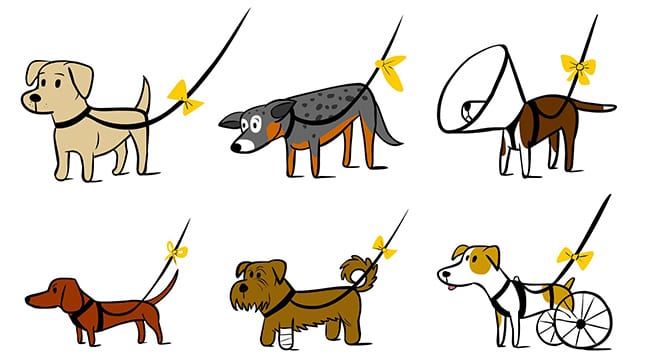
Stranger Danger and Dogs
Stranger Danger and Dogs
How to Help Minimize Frightening Situations for Your Pet.
There’s good news and bad news if your pet is nervous around strangers. The good news is that the general public is gaining more knowledge about safe ways to interact (or not) with strange dogs and their owners. More and more people are learning to ask, “is your dog friendly?” or “can I pet him?” before reaching out their hands or telling their kids to “go say hi!”. The bad news is that there is still a portion of the public that does not have this knowledge.
Whether your dog is a working dog and should not be distracted, gets nervous with strangers or close proximity to them, or is a rescue and growing used to their new environment there are steps that you can take to help reduce their interactions with kids and strangers. Training, and desensitization, and avoiding situations that can be frightening are the first step, but there are some additional steps you can take to avoid these encounters. We’ll take a look at some of them in this article.
Yellow Is a No Go
Thanks to the yellow leash project, the significance of yellow leashes and collars is making the rounds. Yellow has become the color that signifies a dog is nervous, working, or for some other reason should not be pet.
Red Means Stop
In addition to yellow leashes and collars, some pet owners will use a red leash or collar to ward off people and children who might otherwise approach their pet. Opt for Bright shades of red that will catch people’s attention and hopefully give them pause when approaching.
There are a few downsides with these color choices. Some people simply like the color or like the way the color looks on their dog. Other nondog owners might now be aware of the significance of the colors.
Spell It Out
In combination with the yellow or red options, or even on other harnesses, it’s a good idea to also spell out “No Pet” so that people clearly get the message. These options are available both online and in certain pet stores. Bandanas are another option for displaying the “I’m nervous” or “do not pet me” message to strangers who might assume otherwise.
Other Alternatives:
Muzzles
While it might seem mean or extreme to muzzle your dog, it can help send the message that children or untrained adults should not approach you. Muzzles can also help to reduce bites or the perceived threat of a dog bit if the situation does progress too far.
Staying Calm
Dogs take their cues from their humans. If you’re nervous, anxious, or even fearful of a situation and its potential outcome, your dog is going to pick up on that energy. When you see a group of people approaching, the best, and first thing you can do for your dog is to take a deep breath and form a plan. In doing so, you now have the ability to reassure your dog that he/she is okay.
Moving to Avoid Confrontation
If you’re out for a walk or taking a hike and see people approaching, you have the time to maneuver your dog to the side or off the trail. Another helpful move is to place your body between the dog and the source of his/her fear. This body language can be a signal to other people that your dog is not friendly and should not be approached.
Communication
Whether it’s talking to the approaching people, or your dog, communication can be key in getting through the situation without any altercation or confrontation. Talking out loud to your dog in a calming and reassuring tone, but loud enough for the people to hear you can be a non-confrontational way of informing the people that your dog is not one for socialization. Making eye contact and saying hi to the oncoming people, gets their attention. And if they’re in the middle of telling their kids or approaching your dog themselves, it gives you the ability to simply apologize and explain that your dog doesn’t do well in social situations.
Check out our blog post on more daily actives you and your can enjoy!